Embarking on a roof repainting project? You’re likely wondering: how long does roof repainting take? Generally, the process takes about 2 to 4 days, but factors like roof size, weather, and complexity can extend that to 3 to 5 days. Read on as we delve into what dictates these timelines and how to streamline your repainting project.
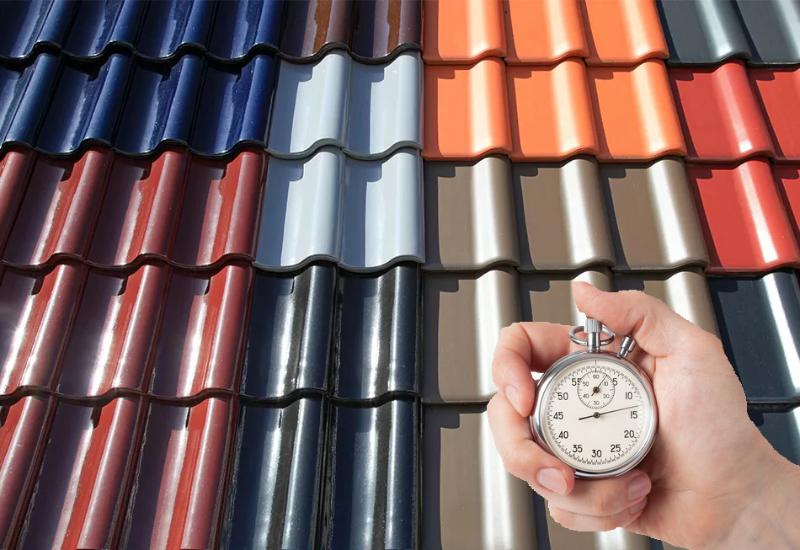
Timeline of a Roof Repainting Project
A typical roof restoration consists of the following steps in the roof restoration process:
- Site preparation
- Repairs
- Pressure washing
- Algae and lichen treatment
- Priming
- Sealing
- Applying two coats of roof membrane
The entire process usually takes about 2 to 4 days, depending on the weather conditions and the size of the roof. However, this duration can extend to around 3 days, influenced by factors such as weather, color choice, and work scope.
Roof painting is quite an involved process. It starts with repairing any broken tiles and rectifying any other issues that may affect the quality of the paint job. After this, the roof undergoes a thorough cleaning process, involving pressure washing to remove any dirt and moss. This step ensures that the paint adheres properly to the roofing material.
Once the roof is clean and free of any debris, the painting process begins. This involves applying a primer and then two layers of roofing membrane, with adequate drying time between applications. It’s important to note that the complexity of the roof design and any safety measures required, especially for double storey buildings, can extend the timeline.
So, how long does a roof restoration take? It’s clear that the duration of a roof restoration project is dependent on several factors, including roof size, weather conditions, and the complexity of the paint job. However, on average, you can expect your roof painting project to be completed within 3 to 5 days.
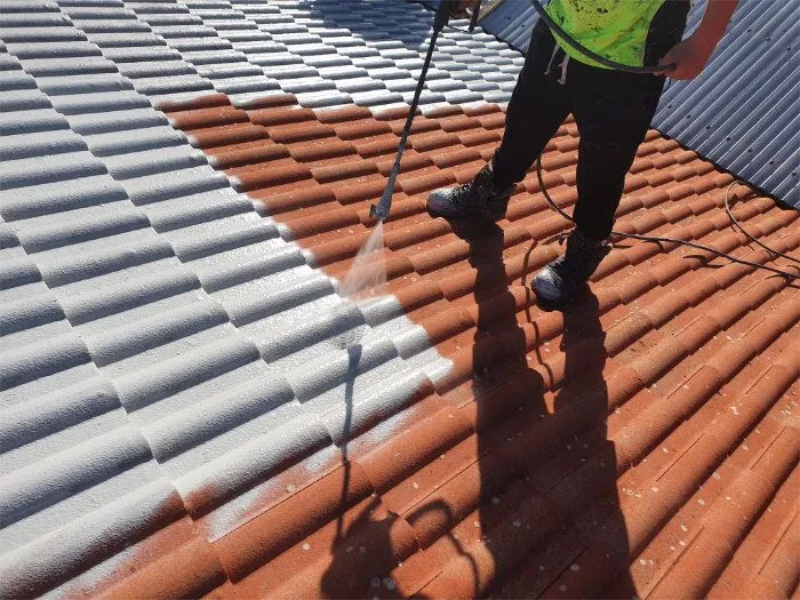
Factors Influencing Repainting Duration
A roof restoration process is influenced by several factors, all of which can impact the duration of the project. One such factor is the complexity of the roof design. For example, a roof with many corners and angles will take longer to paint than a roof with a simple design.
Safety measures also play a significant role in determining the duration of a roof painting project, whether it’s a single or double storey building. Installing temporary edge protection or safety harnesses is particularly time-consuming for double-story buildings, extending the repainting timeline.
Additionally, any necessary repairs must be completed before repainting. This can include tasks like repointing ridge capping and replacing broken tiles, all of which add to the overall project duration.
The cleaning process is another crucial factor that can influence the timeline. Roofs need to be cleaned with water blasters to remove any dirt and moss before painting. This preparatory step, though essential, can extend the project’s length.
In conclusion, the duration of a roof painting project is influenced by a variety of factors, including:
- The complexity of the roof design
- The need for safety measures
- Necessary repairs
- The cleaning process
Understanding these factors can help you better plan for your roof repainting project.
Choosing the right roofing company for your roof restoration is crucial, and Fremantle Roofing Services is a name you can trust. With over 100 5-star reviews on Google, their reputation for quality workmanship speaks for itself. A legitimate roofing contractor must have all necessary permits and insurance to carry out work on a roof. These credentials not only show that the company is authorized to operate but also protect you from potential liabilities during roof restorations.
Experience is a crucial factor when selecting a roofing contractor, and contractors with a proven track record, such as Fremantle Roofing Services, usually deliver better quality work. To assess the reliability of a roofing contractor, you can read local reviews and check ratings from trustworthy sources like the Better Business Bureau.
Warranties offered by roofing contractors are also a good sign of their confidence in their work and provide clients with assurance of quality. Moreover, professional roofing contractors like Fremantle Roofing Services work in a way that ensures peace of mind for homeowners, providing a safe living environment throughout the roof restoration process.
A reputable roofing contractor should:
- Demonstrate genuine concern for the client’s project rather than just focusing on the payment
- Understand and respect the client’s budget and not increase rates unexpectedly during a project
- Allow the client to decline services if they are not comfortable with the contractors’ work methods or terms
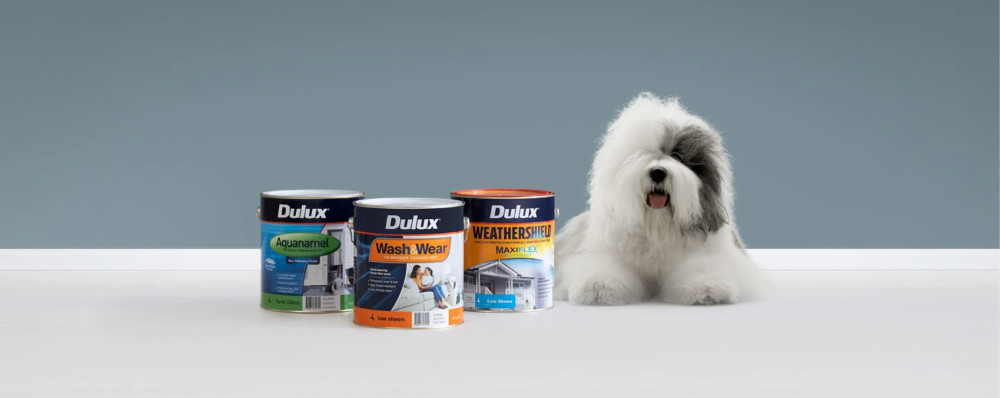
Types of Roof Coatings and Their Drying Times
The type of roof coating used in a roof restoration process can impact the overall project timeline. Different roof coatings, from elastic silicones to protective acrylics and durable polyurethanes, each come with unique curing times.
Silicone roof coatings are known for their excellent adhesion and ability to resist ponding water, making them a great option for protecting solar panels. However, they can attract dirt, which may decrease their reflectivity over time.
On the other hand, acrylic roof coatings provide resistance to UV radiation and hail damage, making them a popular choice for metal roofs. However, their drying time is sensitive to weather conditions, needing warm, low humidity environments to cure properly.
Polyurethane coatings come in a two-part system. The base coat provides durability, while the topcoat ensures UV stability and prolonged color retention. The application of these two layers influences the overall drying and curing times, subsequently affecting the project duration.
So, the choice of roof coating can significantly impact how long a full roof restoration takes.
Summary
To wrap up, the duration of a roof repainting project is influenced by several factors, including the size and design of the roof, the weather conditions, the type of roof coating used, and the efficiency of the roofing company involved. On average, a roof restoration project takes between 2 to 4 days, but this duration can extend depending on the factors mentioned above.
Choosing the right roofing company is crucial to ensuring that the project is completed within the expected timeline and with minimal disruption to your day to day life. It’s also important to consider the type of roof coating used, as different coatings have unique drying times and properties.
In conclusion, while roof repainting is a significant project, it doesn’t have to be daunting. With the right information and the right professionals handling the job, you can have your roof looking brand new in no time!
Frequently Asked Questions
How long does a typical roof repainting project take?
A typical roof repainting project generally takes between 2 to 4 days, but can be longer based on factors like weather, roof size, and design.
What factors can influence the duration of a roof repainting project?
The duration of a roof repainting project can be influenced by factors such as the complexity of the roof design, necessary safety measures, necessary repairs, and the cleaning process. Safety measures and repairs can add to the project’s duration.
Will a roof repainting project disrupt my day to day life?
A roof repainting project, when handled by professionals, is designed to ensure minimal disruption to your day to day life.
How do I choose the right roofing company for my repainting project?
When choosing a roofing company for your repainting project, consider factors such as permits, insurance, experience, customer reviews, warranties, and respect for your budget. These factors will help you make an informed decision and ensure a successful project.
Do different types of roof coatings have different drying times?
Different types of roof coatings do have different drying times. For example, silicone, acrylic, and polyurethane coatings each have their own unique drying times and properties.



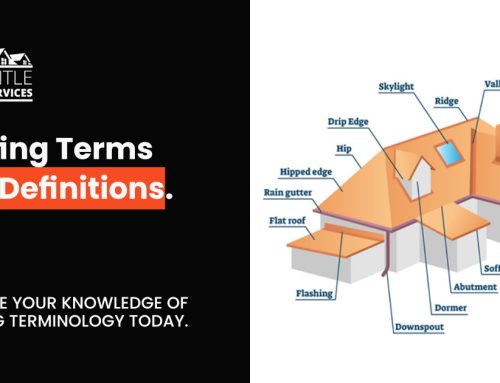
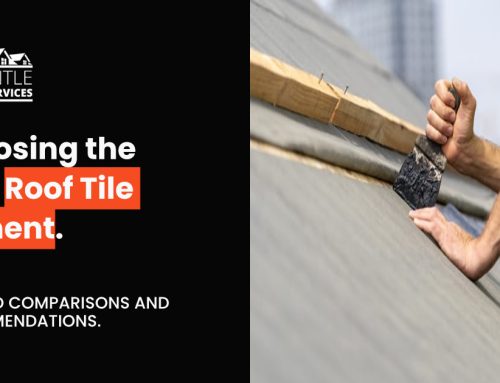

Leave A Comment